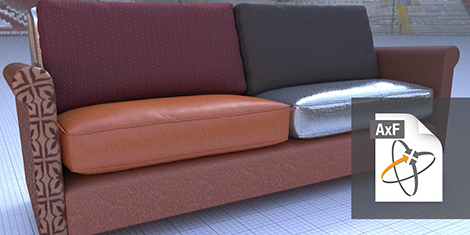
Colour science experts X-Rite and its more well known subsidiary Pantone have announced the release of the Appearance Exchange Format (AxF), a new file for the full communication of material visual appearance.
A vendor-neutral format, AxF claims to provide a standard way to store and share all relevant appearance data – colour, texture, gloss, refraction, translucency, special effects (sparkles) and reflection properties – across PLM, CAD, and state-of-the art rendering applications within in a single, editable file in order to improve the virtualisation process.
The file supports all materials, from special-effects paints, leather, plastics, fabrics, wood, and brushed metals.
The new file format is the foundational component of X-Rite’s recently announced Total Appearance Capture (TAC) ecosystem, an appearance measurement solution that brings a new level of accuracy and efficiency to the capture, communication and digital presentation of physical materials in the virtual world.
A number of PLM and CAD system providers are building integrations with X-Rite’s AxF to leverage TAC’s capabilities, including Autodesk VRED Professional 2017, Luxion KeyShot and the NVIDIA Iray.
X-Rite states that AxF is able to compress raw data from terabytes to megabytes providing third party software applications with efficient access to a full set of material appearance characteristics without compromising performance, and not restricted to a specific device or measurement geometry, spanning single spectrum to full BSSRDF.
“For a growing number of brands in industries ranging from automotive to fashion and home goods, apparel, and media and entertainment, product appearance is a crucial element of the buying decision,” said Dr. Francis Lamy, executive vice president and chief technology officer, X-Rite Pantone. “Appearance must, therefore, be an integral part of the design-to-production process and not just an afterthought. AxF makes this possible.”
“We’re seeing broad industry support for AxF and working directly with hardware and software vendors and members of the research community on new integrations and enhancements,” adds Lamy.






